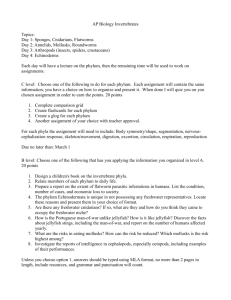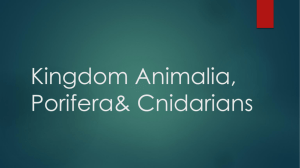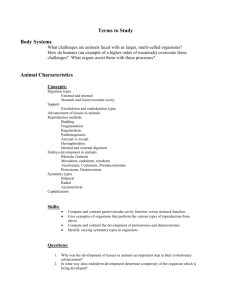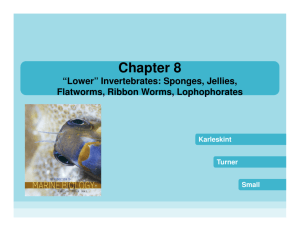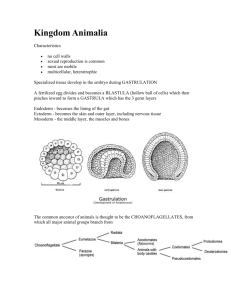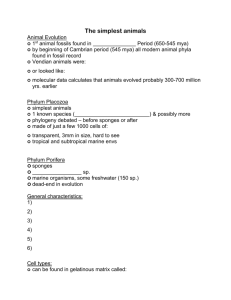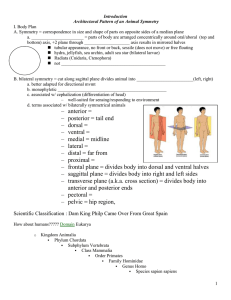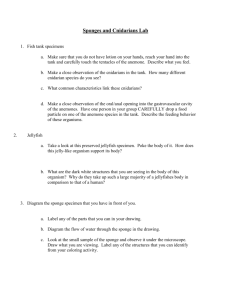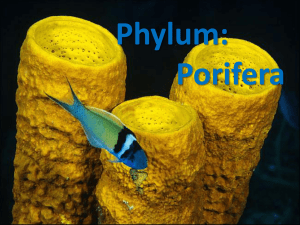Invertebrates- Sponges, Cnidarians, Flatworms and
advertisement
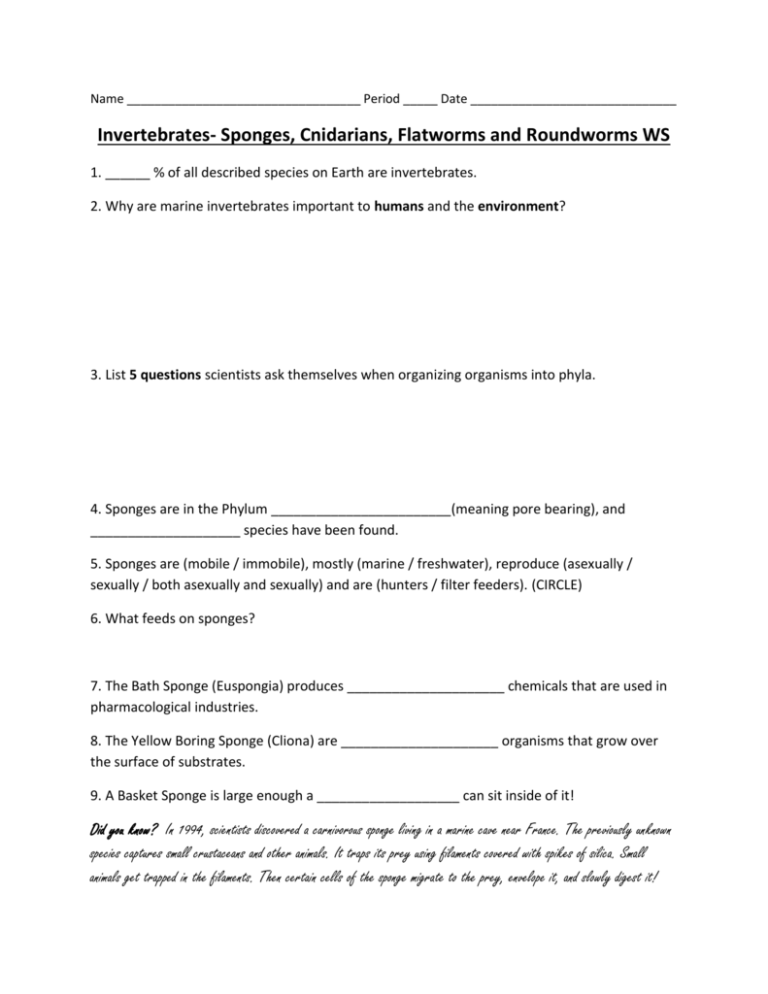
Name __________________________________ Period _____ Date ______________________________ Invertebrates- Sponges, Cnidarians, Flatworms and Roundworms WS 1. ______ % of all described species on Earth are invertebrates. 2. Why are marine invertebrates important to humans and the environment? 3. List 5 questions scientists ask themselves when organizing organisms into phyla. 4. Sponges are in the Phylum ________________________(meaning pore bearing), and ____________________ species have been found. 5. Sponges are (mobile / immobile), mostly (marine / freshwater), reproduce (asexually / sexually / both asexually and sexually) and are (hunters / filter feeders). (CIRCLE) 6. What feeds on sponges? 7. The Bath Sponge (Euspongia) produces _____________________ chemicals that are used in pharmacological industries. 8. The Yellow Boring Sponge (Cliona) are _____________________ organisms that grow over the surface of substrates. 9. A Basket Sponge is large enough a ___________________ can sit inside of it! Did you know? In 1994, scientists discovered a carnivorous sponge living in a marine cave near France. The previously unknown species captures small crustaceans and other animals. It traps its prey using filaments covered with spikes of silica. Small animals get trapped in the filaments. Then certain cells of the sponge migrate to the prey, envelope it, and slowly digest it! 10. The three classes within the Phylum Cnidaria are _______________________________, _________________________________, and __________________________________, and _______________ species have been discovered. Common Name Class Polyp/Medusa/ Both Forms Mostly Marine/Freshwater Sea Fan, Sea Whip, and Sea Plume Coral Freshwater Jelly Hydra Portuguese Man-of War Jellyfish Sea Anemone Obelia 11. Cnidarians are (herbivores / carnivores), have stinging cells called ____________________________, _______________________ symmetry, many have two layers of skin called the ________________________ and ________________________, and one opening is both the ______________________ and ________________________. 12. Jellyfish have toxins in their nematocysts that paralyze and kill fish. Why is it important for a simple floating animal to immobilize its prey? 13. What is a big difference in the life cycles of hydrozoans and scyphozoans? Did you know? In many Asian countries, some species of jellyfish are considered delicacies. Their taste has been compared with that of pickles. Although jellyfish have stinging cells, the salting process used to prepare them breaks down the toxins in these cells. 14. Some cnidarians are unique in exhibiting polyp and medusa forms. How might their two body forms give them an advantage over species that have only one body form? 15. How do coral reefs nurture such diversity of many species? 16. The three major classes within the Phylum Platyhelminthes are _______________________, _____________________________, and ____________________________, and there are ___________________ species known. 17. Flatworms range in size from ___________mm in length to ________________ meters long, are likely the first _________________________ symmetrical animals, and have _____________________ main cell layers. 18. Write a physical characteristic for each class of Platyhelminthes. ~Jellyfish Life Cycle~ Did you know? Deprived of food for long periods of time, flatworms may begin to digest themselves. They shrink in size as they begin to digest their own organs but will grow back to normal when they start eating again, regenerating all lost organs.
